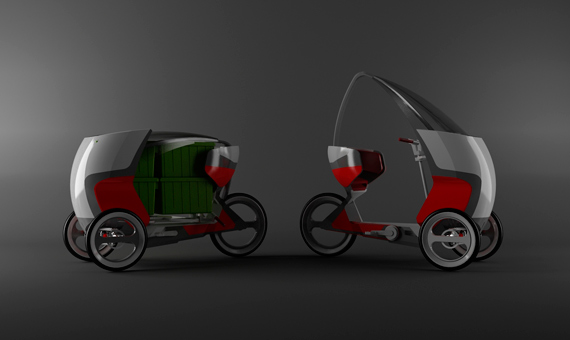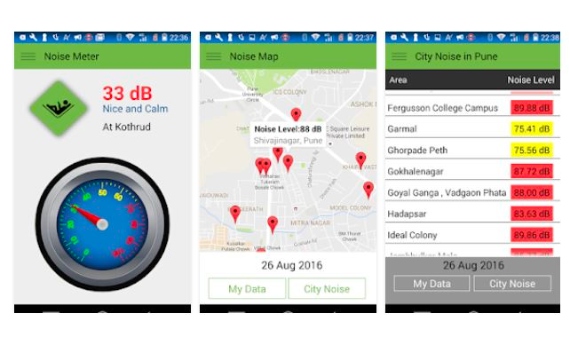Currently 56% of the world’s population lives in cities, a proportion expected to grow to 68% by 2050, according to the United Nations. In the words of Kent Larson, director of the City Science research group at the Massachusetts Institute of Technology (MIT), “we live in a period of extreme urbanisation and an estimated 90% of population growth will take place in cities.” This unstoppable development of large cities, which in the coming decades will be concentrated mainly in India, China and Nigeria, poses enormous challenges for making cities more liveable and sustainable. From the intersection between urban planning and technology emerges the concept of Smart Cities aimed at finding solutions to improve the management of cities. But there is still a long way to go in many fields, from the efficient utilisation of work and living spaces to the development of new forms of transport and mobility or the reduction of pollution, whether atmospheric, acoustic or light.
More versatile spaces
One of the projects developed by the City Science group in recent years has looked at how to make spaces more efficient, whether in a private or working environment. As Hasier Larrea, a former researcher with the group, told OpenMind at the time, the aim of the project was to “increase the functionality” of a work or private space. “What matters is not the square metres, but rather the functionality you get from what you have,” he commented.
In the MIT Media Lab facilities, a 20-square-metre space was built with a mobile wall—a robowall—that moves on rails on the floor to divide the room into two sections, with the possibility of enlarging or reducing them according to the resident’s needs: in a matter of seconds and with just a few hand gestures, the room of a student was automatically converted into a stylish party zone, with disco lights and all.
This mobility can also be vertical; a bed or a table can be lowered from the ceiling to provide space for a dinner party for up to six guests. Thus, with just one click, in the same square metres there is an optimal space, whether for working, sleeping, cooking or having fun.
One of the keys to the design is the ‘Internet of Things’, as most of the furniture or physical elements in the room have integrated sensors that allow for mobility by sensing human signals. “Nowadays, the Internet of Things in the home is limited to lights or thermostats. We also want the walls, beds and tables to be able to talk and listen and to develop new functionality,” explained Larrea. In this way, the elements of the room could be moved depending on the sunlight, temperature or time of day without any prior human activation.
Larrea’s design has become a reality in his startup Ori (from origami), where this Basque engineer has put into practice what he learned at MIT to design mobile spaces where robotic furniture enables residents, according to the company, to “live large in a small footprint.” The initiative has attracted the investment and collaboration of major partners such as Ikea and Google, and is currently implementing its solutions that also seek to create spaces adapted to teleworking in these times of pandemic.
Transport: mobility on demand
Mobility in cities is undergoing a process of transformation, both because of regulations— increasingly strict on pollution—and because of the entry of new vehicles and services, which in many cases seek to satisfy on-demand needs. One example is the PEV (Persuasive Electric Vehicle) tricycle, created by MIT’s City Science group as an ideal means of transport for commuting and making other short journeys. It is pedal-powered, but comes with an auxiliary electric motor to make it easier to move around. One notable feature is that it can be converted into a package carrier. At first glance, it may seem similar to the electric bikesharing options already in operation in many cities, but it has one essential difference: it also operates in autonomous mode. Thus, the user can request the service from a smartphone app and the PEV will go to their location, responding appropriately to vehicle and pedestrian traffic thanks to its sensor system. In addition, if the user only want to transport some objects, it has a Follow Mode that follows the user at the speed they are walking. According to MIT and the automotive parts company Denso, which has developed the PEV for commercialisation, it can travel up to 40 kilometres per charge with a top speed of 32 km/h.

The PEV is another example of the trend in this field towards mobility on demand, in which asymmetrical journeys are envisioned: people can walk to the supermarket to do their shopping, for example, and from a mobile phone they can request the service of a car, scooter or bicycle to take them back home. Or even an aerial vehicle; this is the riskiest proposal, but there are numerous companies involved in a race to launch the first flying and autonomous electric vehicle. At least 14 models are currently under development, including Uber’s in collaboration with Joby Aviation, but the dream of the flying car is ever in doubt, not only in terms of its feasibility, but also with regard to user confidence and the constraints of a regulatory framework.
Quieter cities
One of the major challenges for the cities of the future is to reduce noise pollution. Although extensive research has been carried out in recent years on the harmful effects of air pollution, which the United Nations describes as the most important environmental health risk of our time, noise pollution also has negative effects on physical health, especially cardiovascular, mental and emotional health, and possibly even disrupts children’s learning. Some studies have also shown that the noisiest neighbourhoods tend to be the poorest, which introduces an additional factor of segregation in cities.

Many of the environmental measures that are gaining momentum in cities today reduce noise at the same time as air pollution, such as pedestrianisation or the promotion of electric vehicles. The regulation of noisy activities and the installation of noise barriers help to moderate noise pollution. Some cities are installing noise sensors attached to cameras, and smartphone apps have emerged that allow users to measure the decibel level in their area, which are being used to create noise maps of cities.
But at the same time, new challenges are emerging. For example, where drones have started to be used for parcel delivery, noise pollution has been found to equal or exceed that of devices such as vacuum cleaners or lawnmowers, and studies have shown that the whining sound they produce is more annoying to people than traffic noise or even commercial aircraft at the same volume. According to acoustic engineer Antonio Torija of the University of Salford, incorporating acoustics into drone design can help alleviate this new source of noise, which threatens to become a serious problem if urban flying vehicles ever become a widespread reality.
Light also pollutes
Light pollution has traditionally been largely ignored, as light in cities has not only been seen as a deterrent to crime, but has also been widely used for aesthetic purposes. However, in recent years there has been growing concern over what one study summarised as “negative impacts on wildlife, health, astronomy and wasted energy.”
In 2016, an international team of researchers led by Fabio Falchi of the Light Pollution Science and Technology Institute in Italy published a world atlas of artificial night sky brightness in the journal Science Advances, and the findings were sobering. More than 80% of the world’s population, and more than 99% in the US and Europe, live under skies with high light pollution. What’s more, some 60% of Europeans and 80% of North Americans cannot see the Milky Way in the night sky.

n some cases, the introduction of new technology actually exacerbates the problem. According to Falchi, white LED lights that have generally been installed to reduce energy consumption worsen the problem because of their blue light component, which also interferes with human circadian rhythms. Experts advise using amber LED lights and controlling their direction and intensity.
One of the most obvious technological solutions to light pollution is to reduce the intensity of lighting to the minimum necessary in each case—experiments have shown that streetlights can be dimmed without the general public noticing—and even switching off lights when they are not needed. In 2006, Oslo became the first European city to install an intelligent system of light and traffic sensors that dynamically adapts lighting as required. Systems introduced in recent years allow streetlights to communicate with each other, so that a passer-by is always surrounded by a circle of light that extends more in the direction of travel than behind.
In short, and returning to Kent Larson of MIT, what all these projects have in common is that they respond to the growth in large cities with technological innovation. But there is one important nuance. “That cities be a place for people, not for machines, in which technology is made use of only when it is useful,” says Larson.
Carlos Betriu/Javier Yanes
Comments on this publication